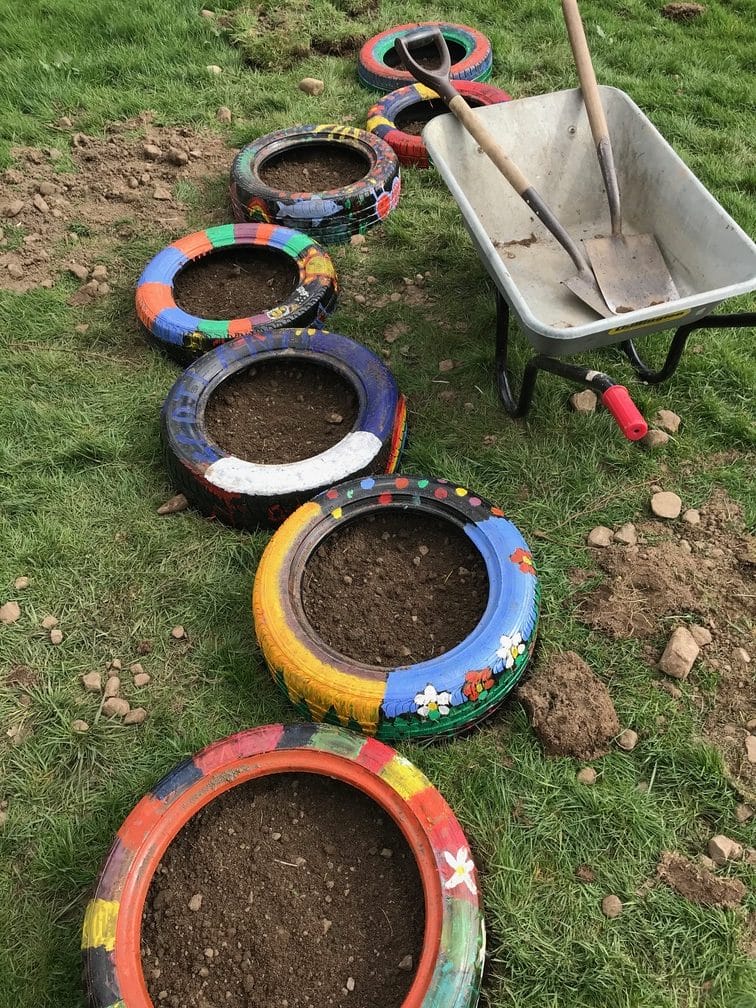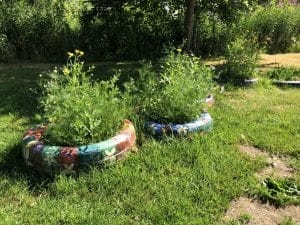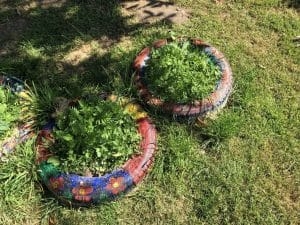May 2018 (Before)
Now that signs of spring are finally showing themselves around Aigas, we have seen Queen bees buzzing around after being woken up from hibernation by the warmer temperatures. They need to find flowers with nectar to feed on to raise their energy levels so they can move on to locate a new nest site for the upcoming summer. Some species of butterfly spend the winter as larvae or pupae, whilst others hibernate and will also be rousing around the same time as the bees. To help these species find flowers and nectar, we are in the process of creating a bee/butterfly garden behind the Magnus House.
Planting native flowers is a great way to attract bees and butterflies to a garden. Wild bees and wildflowers evolved together, so we can be sure that native wildflowers provide bees with a good source of both nectar and pollen. This is why we have chosen a variety of wildflowers adapted for Scotland and kindly donated by Kew Garden’s Grow Wild scheme to plant in our garden. These seed packets include a range of different wildflowers, including common thyme (Thymus polytrichus), wild carrot (Daucus carota), oxeye daisy (Leucanthemum vulgare), corn marigold (Glebionis segetum) and red clover (Trifolium pratense).
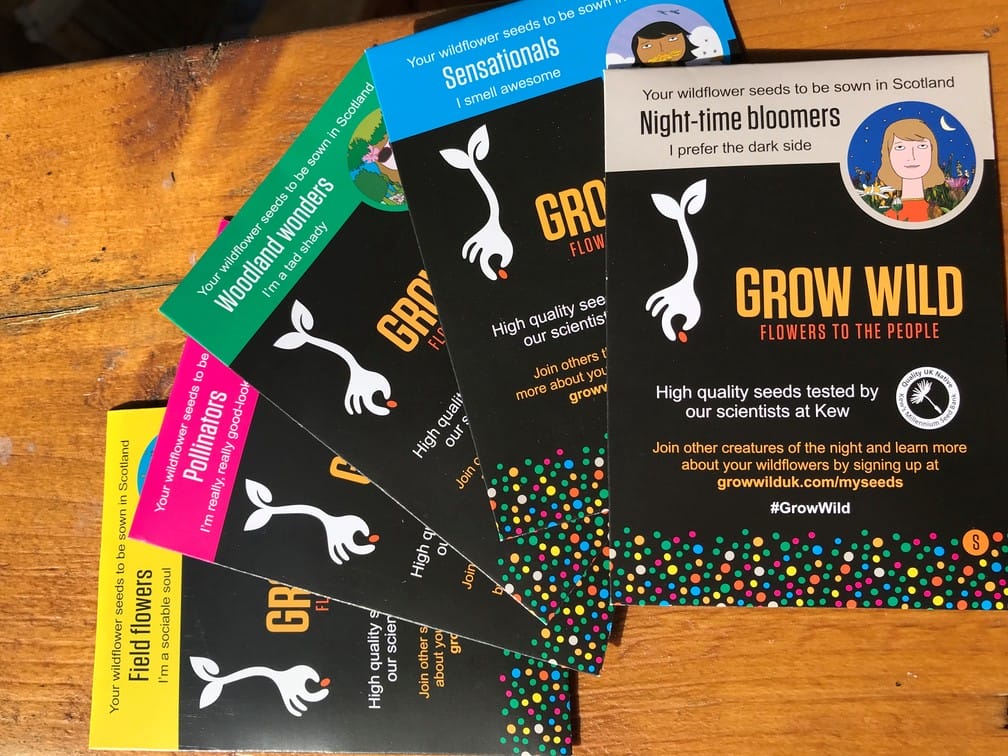
The first step towards creating the garden was to bury slightly into the ground some tyres which were painted by children on Aigas Field Centre’s Nature’s Child programme in 2017.
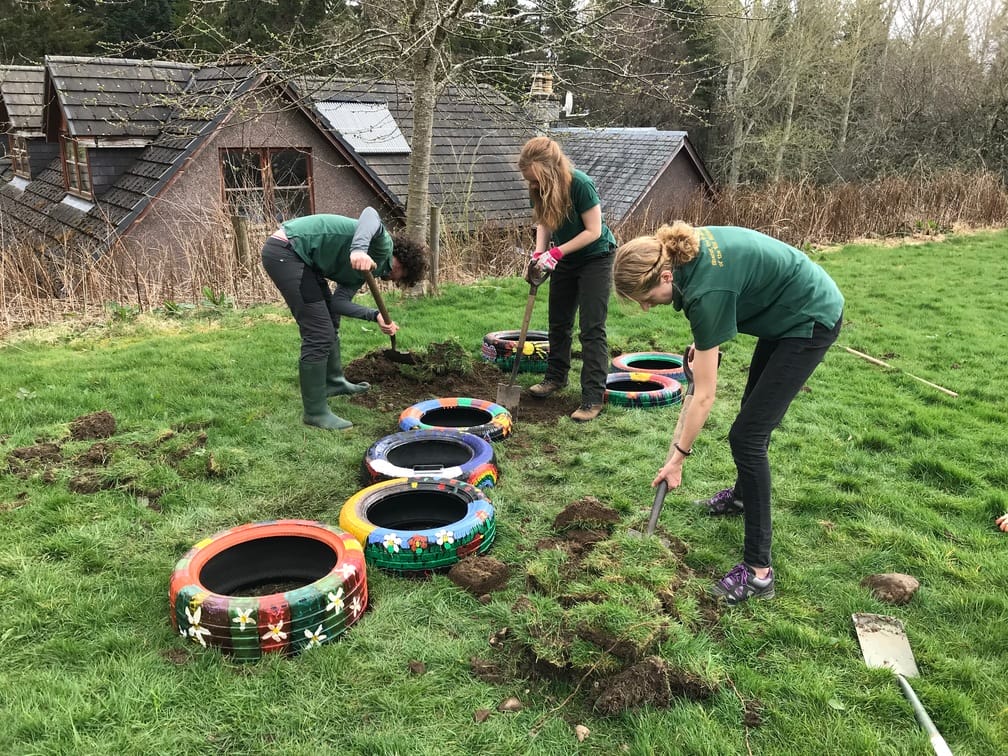
Once these were in place, in the shape of a caterpillar, we added some soil to them with the help of members of a local group, Nansen Highland. Wildflowers grow best in non-nutritious soil so we made sure to remove the top layer and take the soil from underneath that.
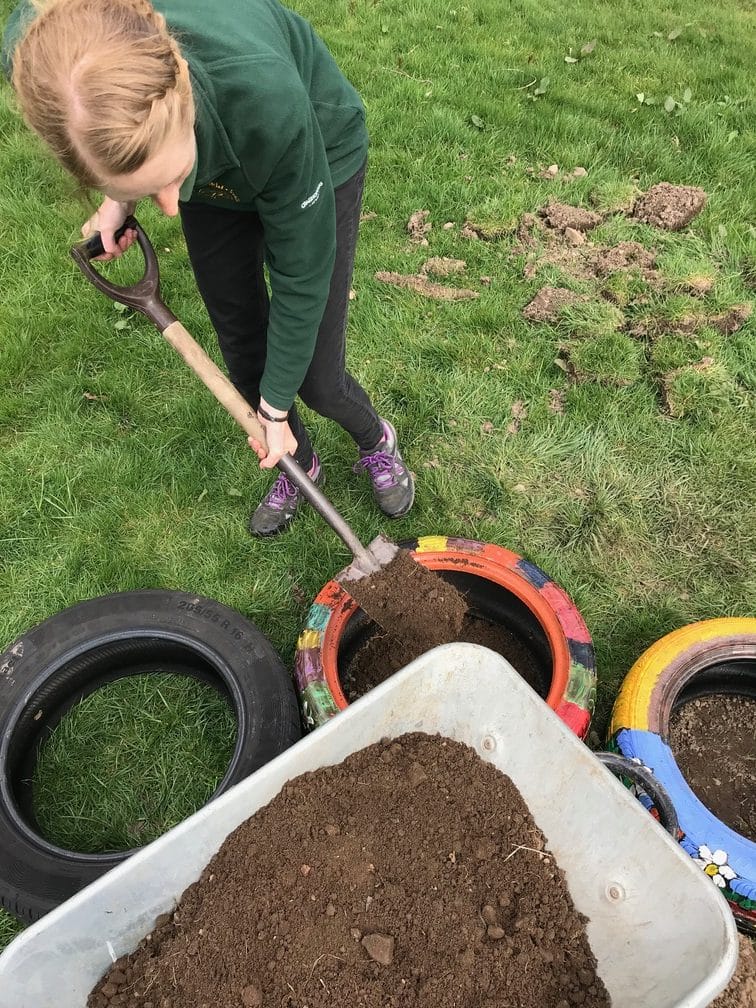
We also removed as many rocks and weeds as we could before raking the soil to make it easier for the roots to penetrate.
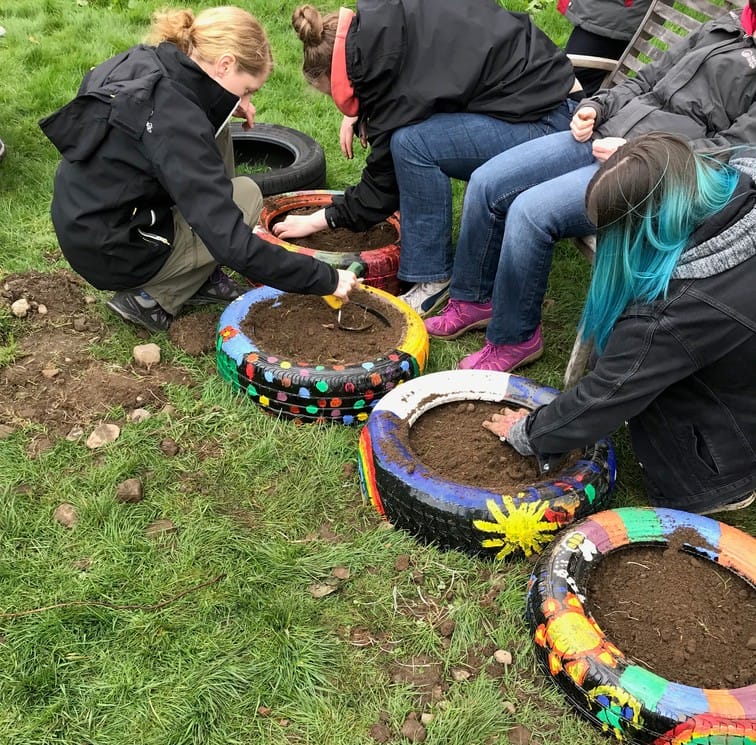
Following this, the wildflower seeds were mixed with flour so that we could see where they were on the soil and ensure they were evenly covering the tyres. The seeds were then sprinkled inside the tyres and we gently raked over them so that they were covered with a thin layer of soil. This step was so that the seeds wouldn’t be blown away but they don’t have too much covering them either. The final step was to gently water them and now we just have to wait for the wildflowers to grow.
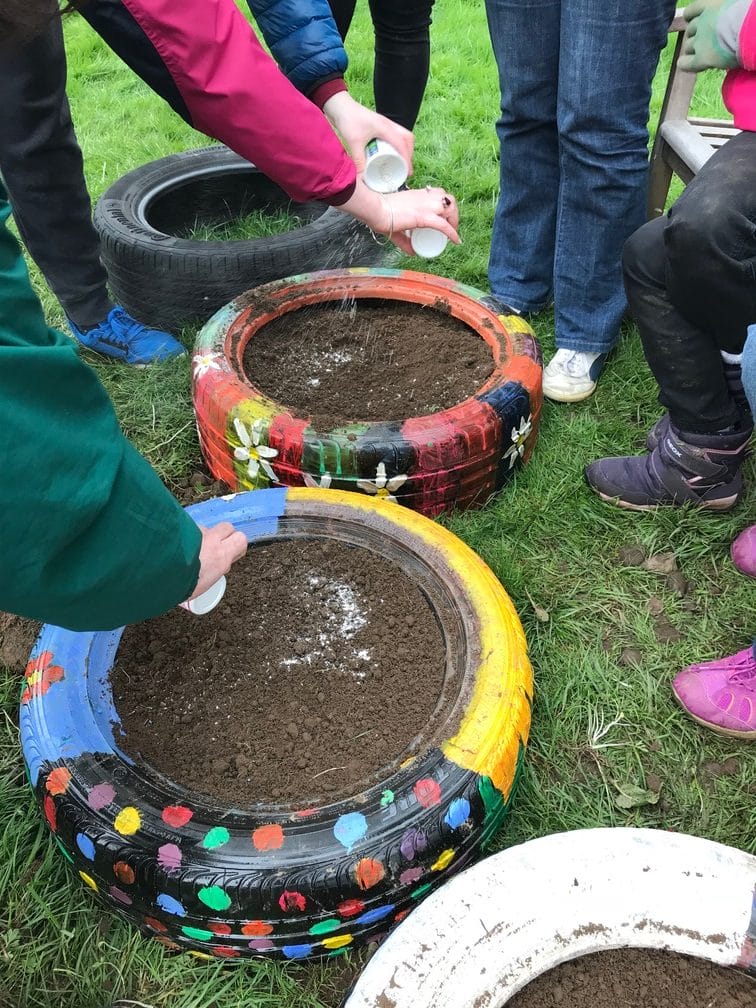
Follow Naturedays on Facebook and sign up to the Naturedays newsletter to keep updated on the bee/ butterfly garden as well as everything else that is happening here.

